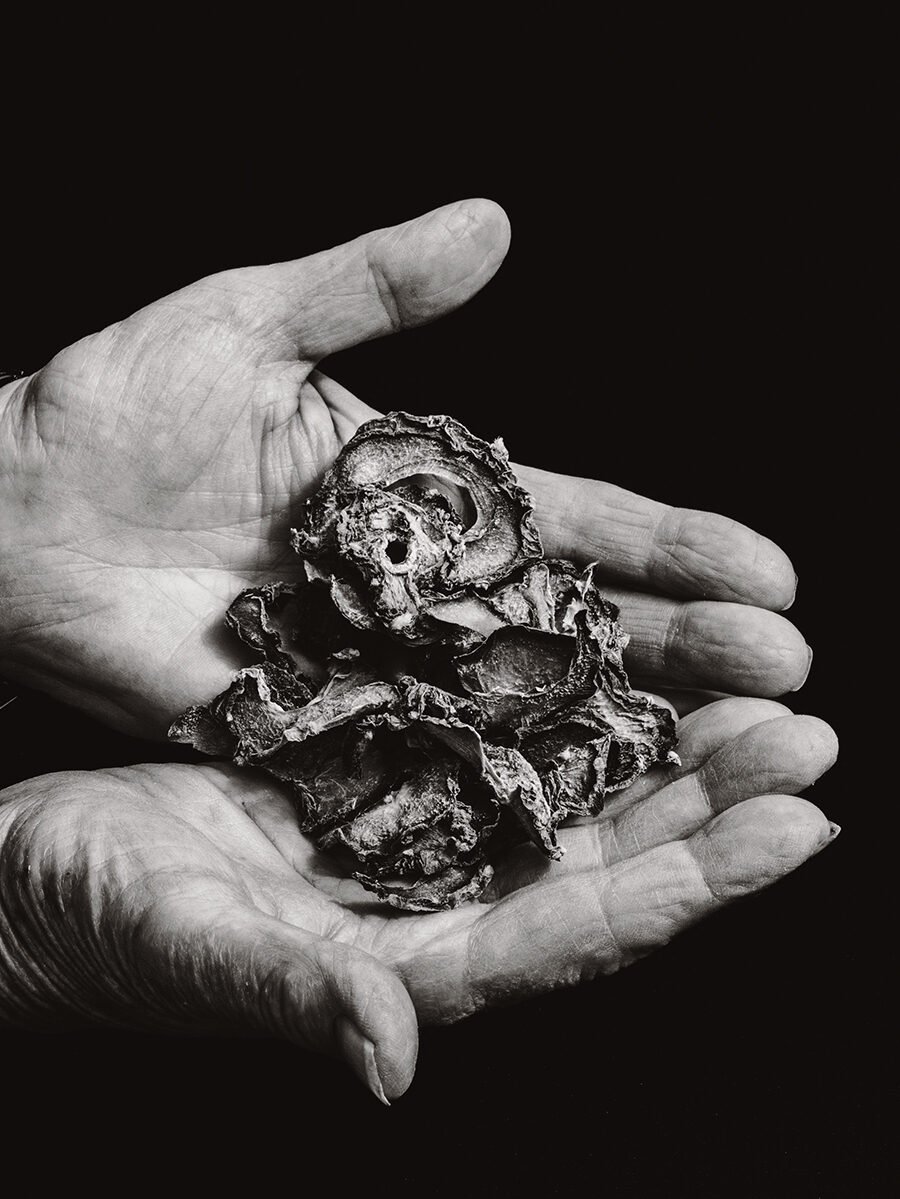Take the Medicine to the White Man

Linda Stone holding sliced peyote. All photographs from Utah, March and April 2023, by Devin Oktar Yalkin for Harper’s Magazine © The artist
Take the Medicine to the White Man
We were in a canyon trying to articulate why we were in the canyon. It was June in Utah, amid a range of mountains that had seen a blessed amount of rain so far that summer. Balsamroot flowers nodded their heads all around the gray nylon tent in which we had gathered for shade. We were a group of eight including our two leaders, Linda Stone—a “medicine woman,” she called herself—and her son, Gent, short for Jeff “Gentle Eagle.” Linda, who was seventy-five years old, and white, was sitting cross-legged on a cot. She was short and strong, with…








































































































